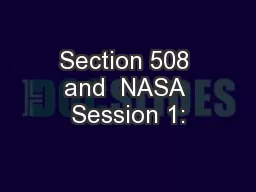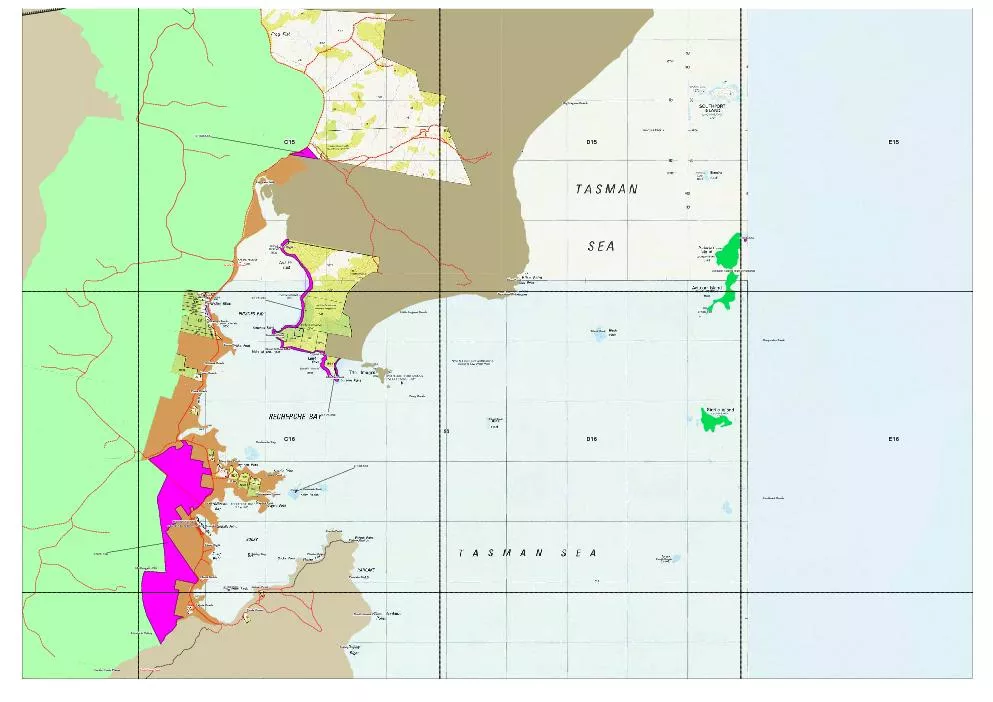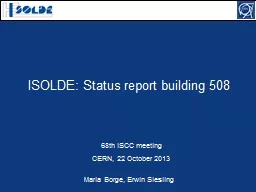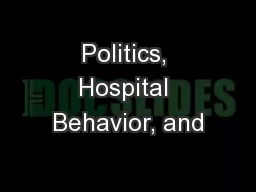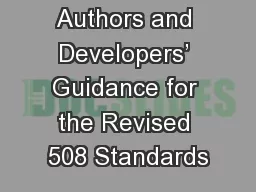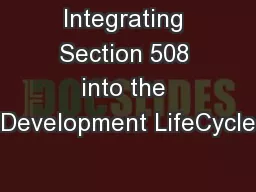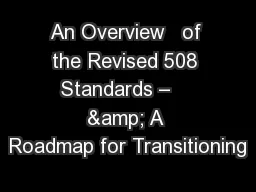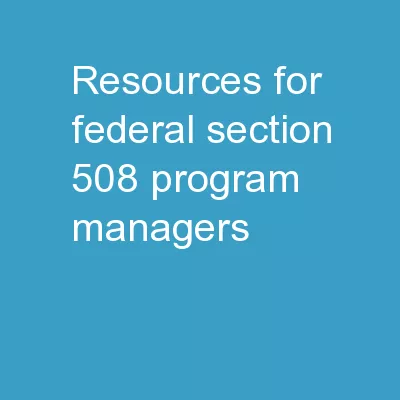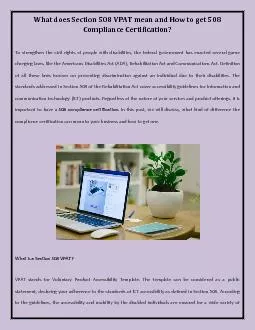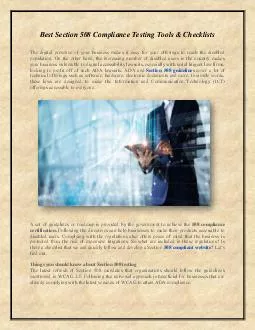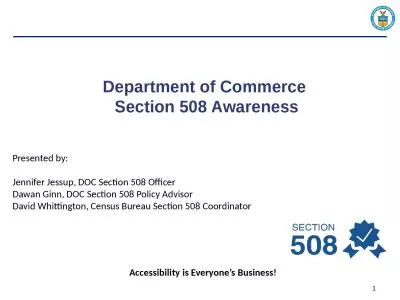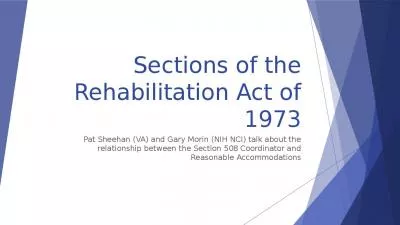PPT-Section 508 and NASA Session 1:
Author : tawny-fly | Published Date : 2018-10-31
What is Section 508 Antonio HaileSelassie Presentation to Ames Research Center November 2011 2 Todays Training Session 1 What is Section 508 Overview of Law and
Presentation Embed Code
Download Presentation
Download Presentation The PPT/PDF document "Section 508 and NASA Session 1:" is the property of its rightful owner. Permission is granted to download and print the materials on this website for personal, non-commercial use only, and to display it on your personal computer provided you do not modify the materials and that you retain all copyright notices contained in the materials. By downloading content from our website, you accept the terms of this agreement.
Section 508 and NASA Session 1:: Transcript
Download Rules Of Document
"Section 508 and NASA Session 1:"The content belongs to its owner. You may download and print it for personal use, without modification, and keep all copyright notices. By downloading, you agree to these terms.
Related Documents

